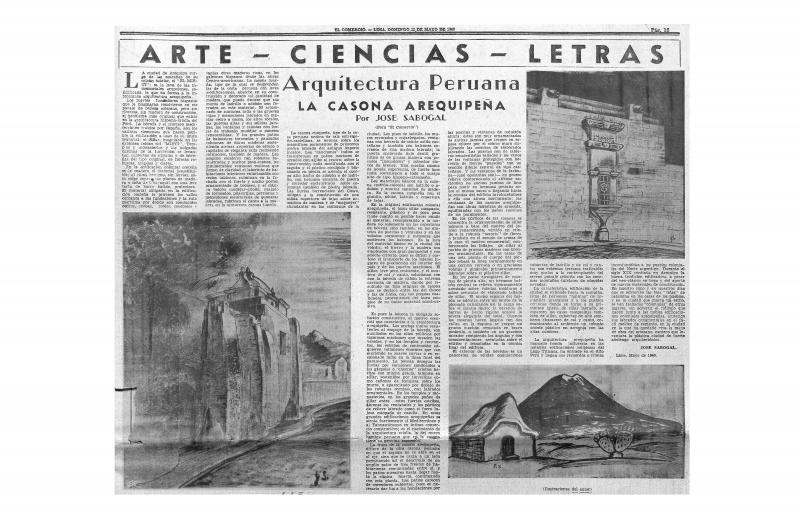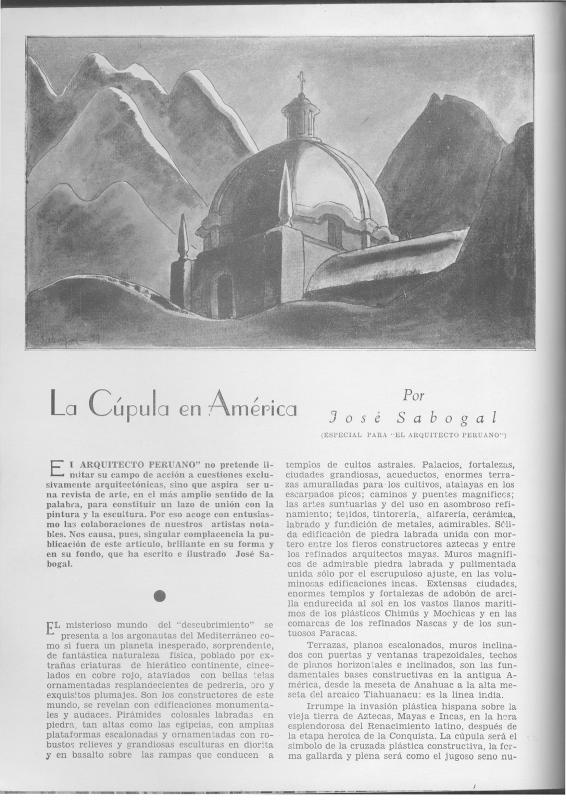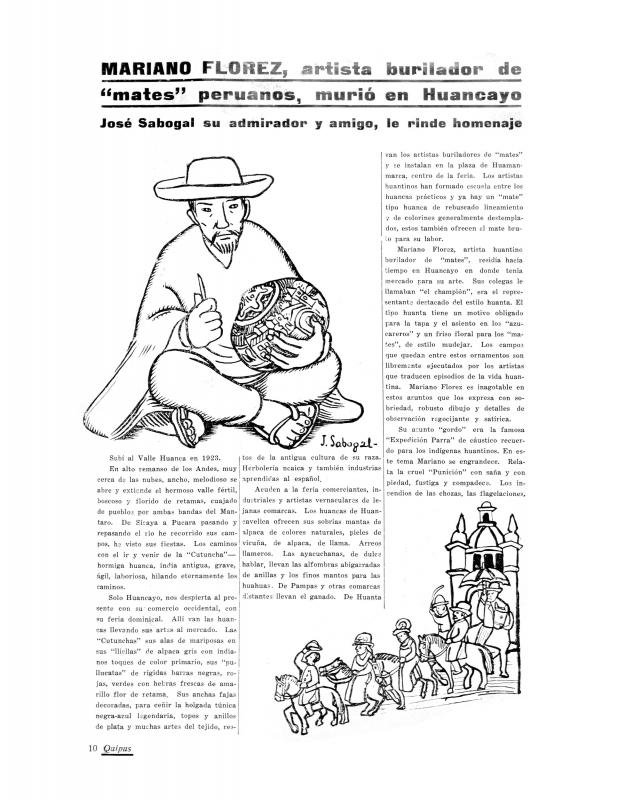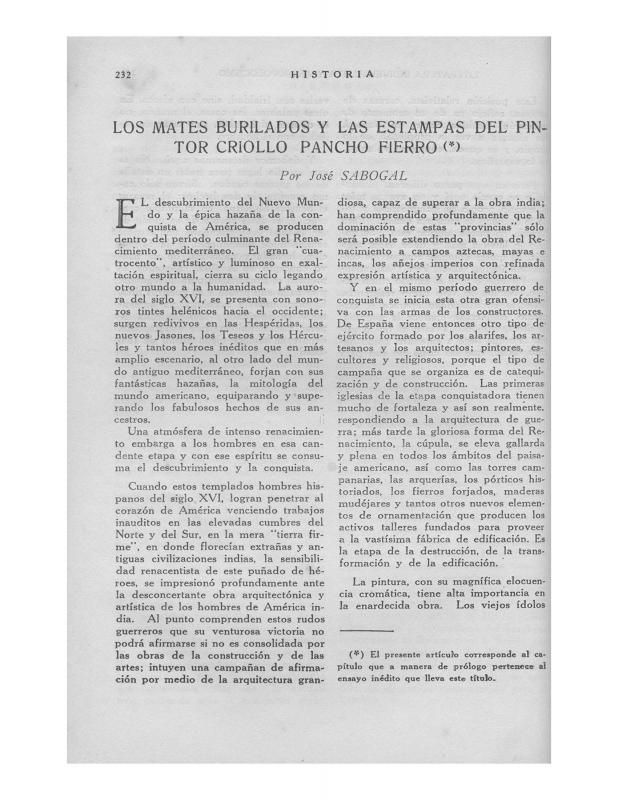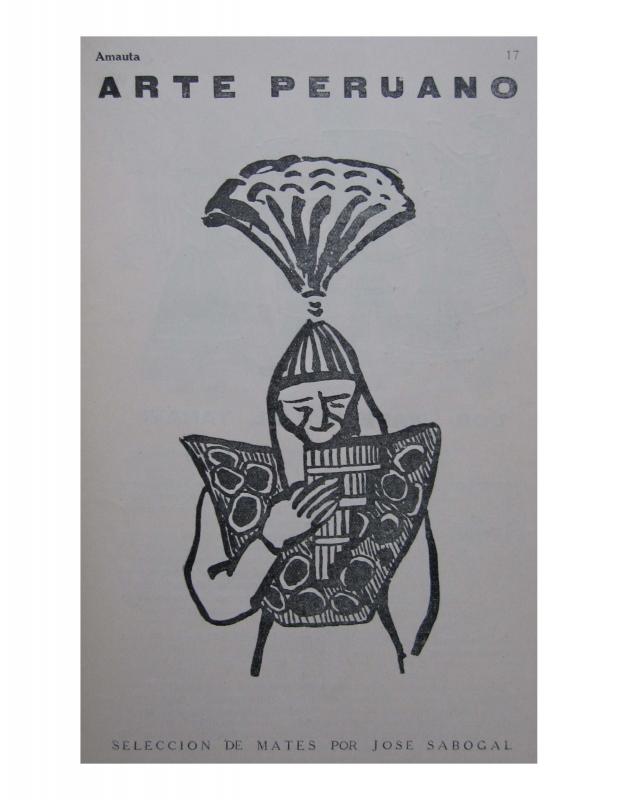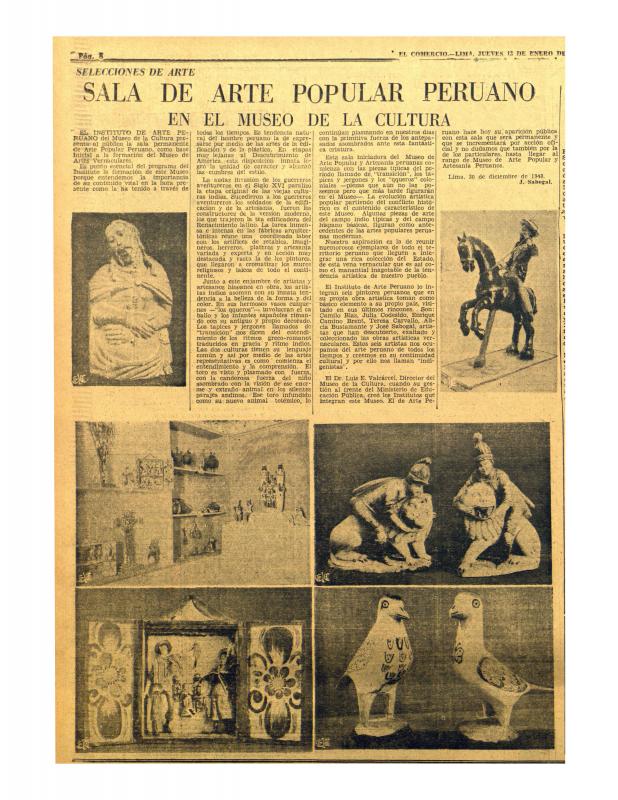In this important article, the Peruvian writer and art critic José Chioino, who uses his pseudonym “Juan de Ega,” interviews José Sabogal, the founder of Peruvian indigenist painting, about his experiences in Mexico, where he has just spent several months on a study trip. Indigenist painting flourished in Peru from the 1920s to the 1940s as part of a broader movement that sought to redefine Peruvian identity in terms of indigenous elements. Although at some points it was entirely focused on the “indigenous” story and the glorious Inca past that also championed a mestizo identity portrayed as a result of the integration of “native” and “Hispanic” cultures. The main ideologue and unchallenged leader of the Indigenist movement in the visual arts was José Sabogal (1888–1956), whose profound interpretation of the concept of “being rooted” was deeply influenced by regional art movements in Spain (exemplified by Ignacio Zuloaga [1870–1945], among others) and in Argentina (Jorge Bermúdez [1883–1926], to mention just one); Sabogal spent a great deal of time in these countries during his formative years. When he returned to Peru in late 1918, he settled in Cuzco where he produced about forty oil paintings of people and scenes of the city; these works were subsequently shown in Lima (1919) at an exhibition that is considered the formal beginning of Indigenist painting in Peru. Sabogal’s second solo exhibition at the Casino Español (1921), established his reputation. He joined the faculty at the new Escuela Nacional de Bellas Artes in 1920, where he was eventually appointed director (1932–43). There he trained a group of painters who joined the Indigenist movement: Julia Codesido, Alicia Bustamante (1905–1968), Teresa Carvallo (1895–1988), Enrique Camino Brent (1909–1960), and Camilo Blas (1903–1985). In 1923, Sabogal spent six months in Mexico to familiarize himself with the changes that had taken place in the country’s art, including the visual arts, following the outbreak of the Revolution (1910–21). He spent most of the time in Mexico City and Guadalajara, where he visited museums and met with the major artists in the so-called Mexican School (Rivera, Orozco, and Siqueiros). Sabogal and his work were well received; he sold some paintings to the museum and town hall in Guadalajara, and contributed something to the local development of xylography printing. This visit to Mexico increased his interest in traditional art, mural painting, and nationalist forms of identification. [There are many articles about this artist in the ICAA digital archive, including the following written by Sabogal: “Arquitectura peruana: la casona arequipeña (doc. no. 1173340); “La cúpula en América” (doc. no. 1125912); “Mariano Florez, artista burilador de "mates" peruanos, murió en Huancayo: José Sabogal su admirador y amigo, le rinde homenaje” (doc. no. 1136695); “Los mates burilados y las estampas del pintor criollo Pancho Fierro” (doc. no. 1173400); “Los 'mates' y el yaraví” (doc. no. 1126008); “La pintura mexicana moderna” (doc. no. 1051636); and “Sala de arte popular peruano en el Museo de la Cultura : selecciones de arte” (doc. no. 1173418)].

